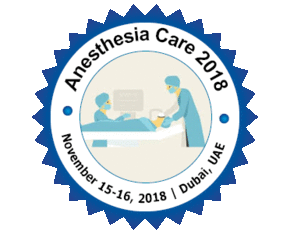
Husham Al-Shather
Royal Berkshire NHS Foundation Trust
Title: Intravenous Lidociane infusion for patients with chronic pain conditions at Royal Berkshire NHS Foundation Trust in England, How are we doing?
Biography
Biography: Husham Al-Shather
Abstract
Background: Intravenous Lidociane Infusion Protocol (ILIP) for Chronic Pain Conditions in Royal Berkshire NHS Foundation
Trust was introduced in 2008. This protocol was set to provide a safe environment as well as ensuring that patients always
receive best possible care at the right time.
Objectives: In this audit, we aimed to measure the compliance with the ILIP and to determine the clinical outcome of ILIP in
Chronic Pain Conditions that are not responding to conventional treatments.
Methods: After departmental and Hospital approval, we undertook a retrospective analysis of 100 patients who underwent
two or more intravenous Lidociane infusion between March and November 2017. We looked at the patients’ demographics,
indication of Lidociane infusion, dose of Lidociane, duration of procedure, possible side effects and complications after
intravenous Lidociane. Post-procedure outcomes including patients’ experience and overall value of care were also collected.
Results: The average patient age was 48 years. 87% of patients were females and 13% were males. Non-invasive monitoring
(ECG, BP, SPO2 and Temperature) was performed in 100% of cases. Lidociane (2%) was used in all patients, with an average
dose of 4.8 mg/kg. The average length of procedure was 68.5 minutes. During the procedure, intravenous Plasma-Lyte 148 (pH
7.4) solution was used in all cases. The majority of patients had Fibromyalgia or Widespread Pain (81/100). 100% of infusions
were performed by Consultant Pain Specialist and fully trained Specialist Nurses supervised all procedures. 82% of patients
had no complication or side effect. The most common side effects were generalised numbness and tingling sensation (12%).
There was no significant side effect or complication documented during or after the infusion.
Conclusions: Most of intravenous Lidocaine infusion protocol elements for chronic pain conditions were being followed
appropriately. Our audit demonstrated that adherence to ILIP for a chronic pain condition was associated with significant
satisfaction among patients and staff with minimal side effects.

